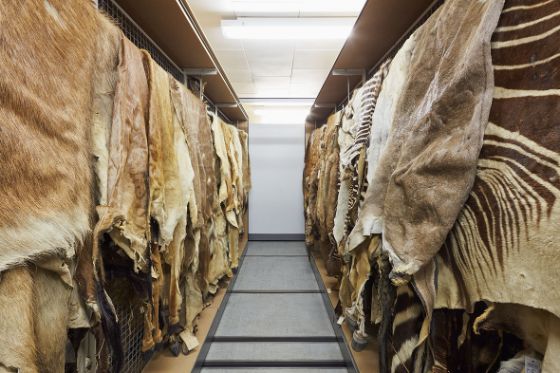
REGIONAL MINERAL COLLECTIONS
The Natural History Museum Basel has various regional mineral collections. Alongside a collection from the Lengenbach quarry in the Upper Valais canton, these collections come from the areas around Basel, specifically the Black Forest, Vosges and Kaiserstuhl.
With its unique minerals, the Lengenbach quarry in the Binn Valley in Valais is one of the ten most famous discovery sites for minerals. This site of unusual ore minerals has been known about since the early 18th century, when Switzerland began searching intensively for productive ore deposits. The sulfosalt mineralisation is located in the Triassic olomite, an area of rocks running from the southwest to the northeast through the Binn Valley. The Natural History Museum Basel has some 3,250 objects, representing probably the world's most complete collection of the famous Lengenbach minerals. The first sample came to Basel in 1797. Around 30 mineral species have now been identified from the quarry. Of these, nine species are kept in our type collection.
The collection of minerals from the Black Forest comprises more than 1,700 specimens. The crystals mainly come from the southern Black Forest.
The collection has grown over time and is exceptionally valuable, although many more unusual pieces date from the 18th and 19th centuries, the last golden age of mining in the Black Forest. Systematic research of the southern Black Forest was most notably initiated and shaped by Basel-born Peter Merian. He is regarded as a pioneer of the regional geology of the Hotzenwald.
The Natural History Museum Basel is also home to the following smaller collections from the region:
- Minerals of the Vosges (France)
- Minerals of the Kaiserstuhl (Germany)
- Minerals of the Hegau (Germany)
